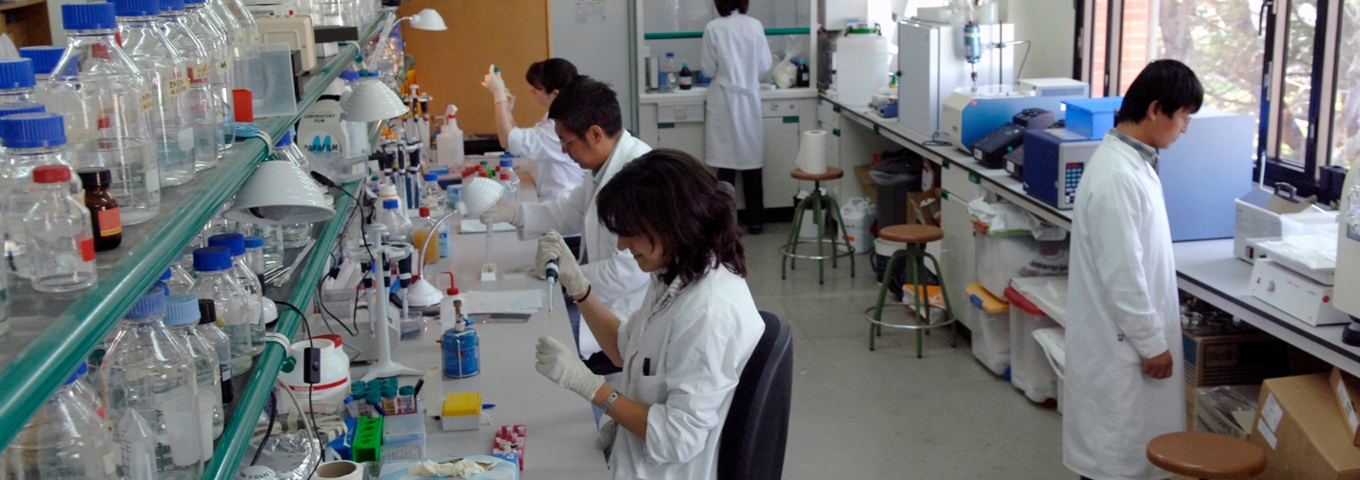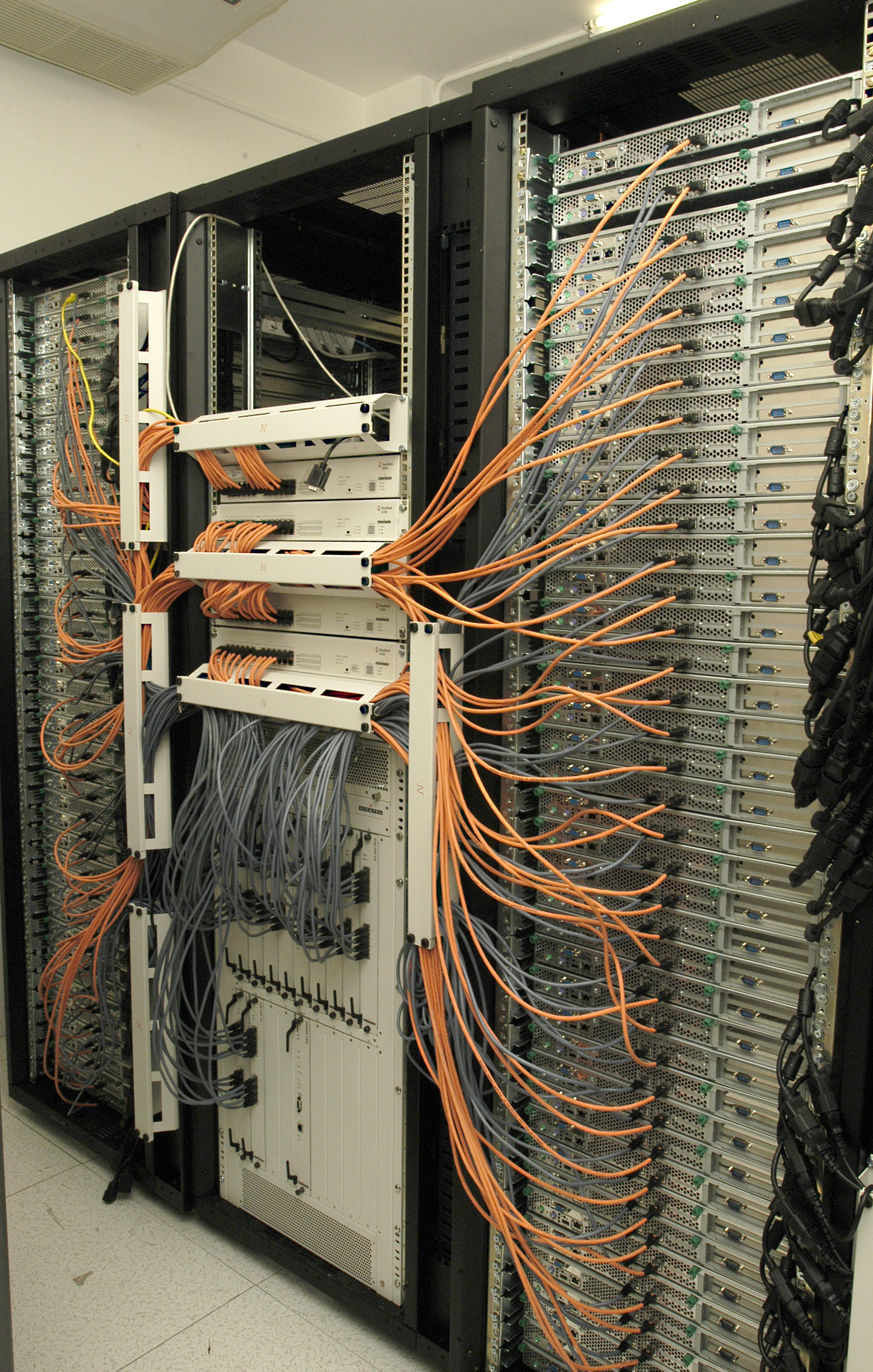Research
The most fundamental process regulated by the cell cycle machinery is the faithful replication and segregation of chromosomes. Failure to maintain the integrity of the genome often leads to the death of the cell or to chromosome aberrations, a hallmark of cancer cells.
Our lab investigates the role of SMC complexes in different chromosome transactions to maintain cell viability and genome integrity. We are also interested in the regulation of SMC complexes by ubiquitin and SUMO. In the particular case of Smc5/6, this connection is even more intriguing as E3 ligases are integral subunits of this complex.
SMC complexes in Genome Integrity
Accurate chromosome segregation requires the removal of the DNA junctions that connect duplicated chromosomes; but also the assembly of protein connections to pair replicated sister chromatids.
SMC complexes play essential roles in both promoting and eliminating connections between sister chromatids and within different positions in a chromatin fiber.
.
To achieve this goal, core SMC proteins associate with other non-SMC elements, including a kleisin (shown in yellow in the illustration) that closes a ring-shaped structure. Current models propose that the SMC rings are able to embrace chromatin fibers, an activity that is vital to shape chromosome structure.
Smc5/6 promotes chromosome disjunction
Our work has uncovered a role for the Smc5/6 complex in chromosome disjunction (Torres-Rosell et al., 2005, Torres-Rosell et al 2007; Bermúdez-López et al, 2010), by promoting the elimination of DNA junctions connecting newly replicated sister chromatids. This function is particularly important in the rDNA locus, which frequently fails to segregate in smc5/6 mutants.
Our observations indicate that smc5/6 mutants accumulate ongoing replication forks and recombination intermediates in the rDNA at the time of anaphase onset, which preclude rDNA segregation. The accumulation of segregation failues in the rDNA array is due to the presence of replication fork barriers, high levels of RNA Polymerase I transcription and recombination events (Torres-Rosell et al 2005 and 2007).
Despite smc5/6 mutants show high levels of chromosome non-disjunction in the rDNA array, Smc5/6 function is not restricted to this locus, and the segregation defects occur in virtually all other chromosomes after exposure to replication fork damage (Bermúdez-López et al 2010).
Although we currently do not understand how Smc5/6 promotes chromosome disjunction, we know that it is partly mediated through activation of Sgs1, the yeast homologue of the Bloom syndrome helicase (Bermúdez-López et al, Genes&Dev 2016).
Regulation of E3 ligases
The Smc5/6 complex is the docking site for ubiquitin and SUMO E3 ligases (Nse1 and Nse2, respectively), a feature that highlight its potential signaling skills.
At the mechanistic level, we have recently shown that the SUMO ligase in the Smc5/6 complex is coupled to its ATPase activity (Bermudez-Lopez et al, Plos Biology 2015). Besides, the activity of the Nse2 SUMO ligase is upregulated by interactions between DNA and the coiled coil domain of Smc5 (Varejão et al EMBO J 2018).
One of the main targets of this SUMO ligase is the Sgs1 helicase, an enzyme capable of removing sister chromatid junctions; the Smc5/6 complex is therefore able to control chromosome disjunction through Sgs1 (Bermúdez-López et al, Genes&Dev 2016).
Tools to alter protein group sumoylation
Fusion to Ulp Domains (UDs)To better understand SUMO-dependent processes, we have also developed new tools to alter the sumoylation of protein complexes, based on fusion of SUMO peptidases domains (Ulp domains or UD) to SUMO targets (Colomina et al. Methods Mol Biol 2017; Almedawar et al Cur Biol 2012). The constitutive presence of a UD in the complex effectively depletes SUMO from all subunits. Fusion to inactive UD domains (UDi; shown in black below) allows to control for possible side.effects not direcly related to protein desumoylation.
This approach allowed us to show that the sumoylation of cohesin is essential for cohesion and chromosome segregation (Almedawar et al., Current Biology 2012).

Publications
Last edited May 2018VAREJÃO N, IBARS E, LASCORZ J, COLOMINA N, TORRES-ROSELL J*, REVERTER D*. (2018). DNA activates the Nse2/Mms21 SUMO E3 ligase in the Smc5/6 complex. EMBO J. doi: 10.15252/embj.201798306.
COLOMINA N, GUASCH C, TORRES-ROSELL J. (2017). Analysis of SUMOylation in the RENT Complex by Fusion to a SUMO-Specific Protease Domain. Methods Mol Biol 1505:97-117.
BERMÚDEZ-LÓPEZ M, VILLORIA MT, ESTERAS M, JARMUZ A, TORRES-ROSELL J, CLEMENTE-BLANCO A, ARAGON L. (2016). Sgs1's roles in DNA end resection, HJ dissolution, and crossover suppression require a two-step SUMO regulation dependent on Smc5/6. Genes Dev 30; 1339-56 .
FUSTE NP, FERNANDEZ-HERNANDEZ R, CEMELI T, MIRANTES C, PEDRAZA N, RAFEL M, TORRES-ROSELL J, COLOMINA N, FERREZUELO F, DOLCET X, GARI E. (2016). Cytoplasmic cyclin D1 regulates cell invasion and metastasis through the phosphorylation of paxillin . Nat Commun 7; 11581 .
AMARAL N, VENDRELL A, FUNAYA C, IDRISSI FZ, MAIER M, KUMAR A, NEUROHR G, COLOMINA N, TORRES-ROSELL J, GELI MI, MENDOZA M . (2016). The Aurora-B-dependent NoCut checkpoint prevents damage of anaphase bridges after DNA replication stress. Nat Cell Biol 18; 516-26 .
BERMÚDEZ-LÓPEZ M, POCIÑO-MERINO I, SANCHEZ H, BUENO A, GUASCH C, ALMEDAWAR S, BRU-VIRGILI S, GARI E, WYMAN C, REVERTER D, COLOMINA N, TORRES-ROSELL J. (2015). ATPase-dependent control of the Mms21 SUMO ligase during DNA repair. PLoS Biology.13(3):e100208
ALMEDAWAR S, COLOMINA N, BERMÚDEZ-LÓPEZ M, POCIÑO-MERINO I, TORRES-ROSELL J. (2012). A SUMO-dependent step during establishment of sister chromatid cohesion. Current Biology. 22; 1576-81.
BERMUDEZ-LOPEZ M, CESCHIA A, de PICCOLI G, COLOMINA N, PASERO P, ARAGON L, TORRES-ROSELL J. (2010). The Smc5/6 complex is required for dissolution of DNA-mediated sister chromatid linkages. Nucleic Acids Research. 38; 6502-12.
DE PICCOLI G, TORRES-ROSELL J, ARAGON L. (2009). The unnamed complex: what do we know about Smc5-Smc6? Chromosome Research 17; 251-263.
HWANG JY, SMITH S, CESCHIA A, TORRES-ROSELL J, ARAGON L, MYUNG K. (2008). Smc5-Smc6 complex suppresses gross chromosomal rearrangements mediated by break-induced replications. DNA Repair. 7; 1426-1436.
TORRES-ROSELL J, DE PICCOLI G, ARAGON L. (2007). Can eukaryotic cells monitor the presence of unreplicated DNA? Cell Division 2:19.
TORRES-ROSELL J, SUNJEVARIC I, DE PICCOLI G, SACHER M, ECKERT-BOULET N, REID R, JENTSCH S, ROTHSTEIN R, ARAGON L, LISBY M. (2007). The Smc5-Smc6 complex and SUMO modification of Rad52 regulates recombinational repair of double-strand breaks at the rDNA locus. Nature Cell Biology. 9; 923-931
TORRES-ROSELL J, DE PICCOLI G, CORDON-PRECIADO V, FARMER S, JARMUZ, A, MACHIN F, PASERO P, LISBY M, HABER JE, ARAGON L. (2007). Anaphase onset before complete DNA replication with intact checkpoint responses. Science 315; 1411-15.
Job opportunities
We are regularly looking for highly motivated undergraduate (BSc, MSc,) students, and the most talented PhD students and PostDocs to join us. If you are interested in joining our group or want further information, please contact us: jordi.torres (at) cmb.udl.cat
Lorem ipsum dolor sit amet, consectetur adipiscing elit
Lorem ipsum dolor sit amet
Proin dictum ex quis felis ultrices facilisis. Vestibulum ante ipsum primis in faucibus orci luctus et ultrices posuere cubilia Curae; Curabitur nec tincidunt lectus. Nulla accumsan aliquet leo, ut posuere massa aliquam sit amet. Mauris ornare efficitur commodo. Duis ornare elit id vestibulum ultricies. Donec euismod, quam in posuere fermentum, dolor lacus convallis tellus, ac porta libero massa a nibh. Suspendisse odio dolor, faucibus eu metus ut, finibus laoreet mi. Vivamus eget nisl ex. Sed fermentum lacinia libero, ut sodales leo lacinia sit amet. Phasellus vestibulum pretium magna viverra ultrices. Vivamus tempor arcu id cursus hendrerit. Fusce volutpat, massa at faucibus venenatis, quam libero mattis orci, in viverra velit risus quis velit.






